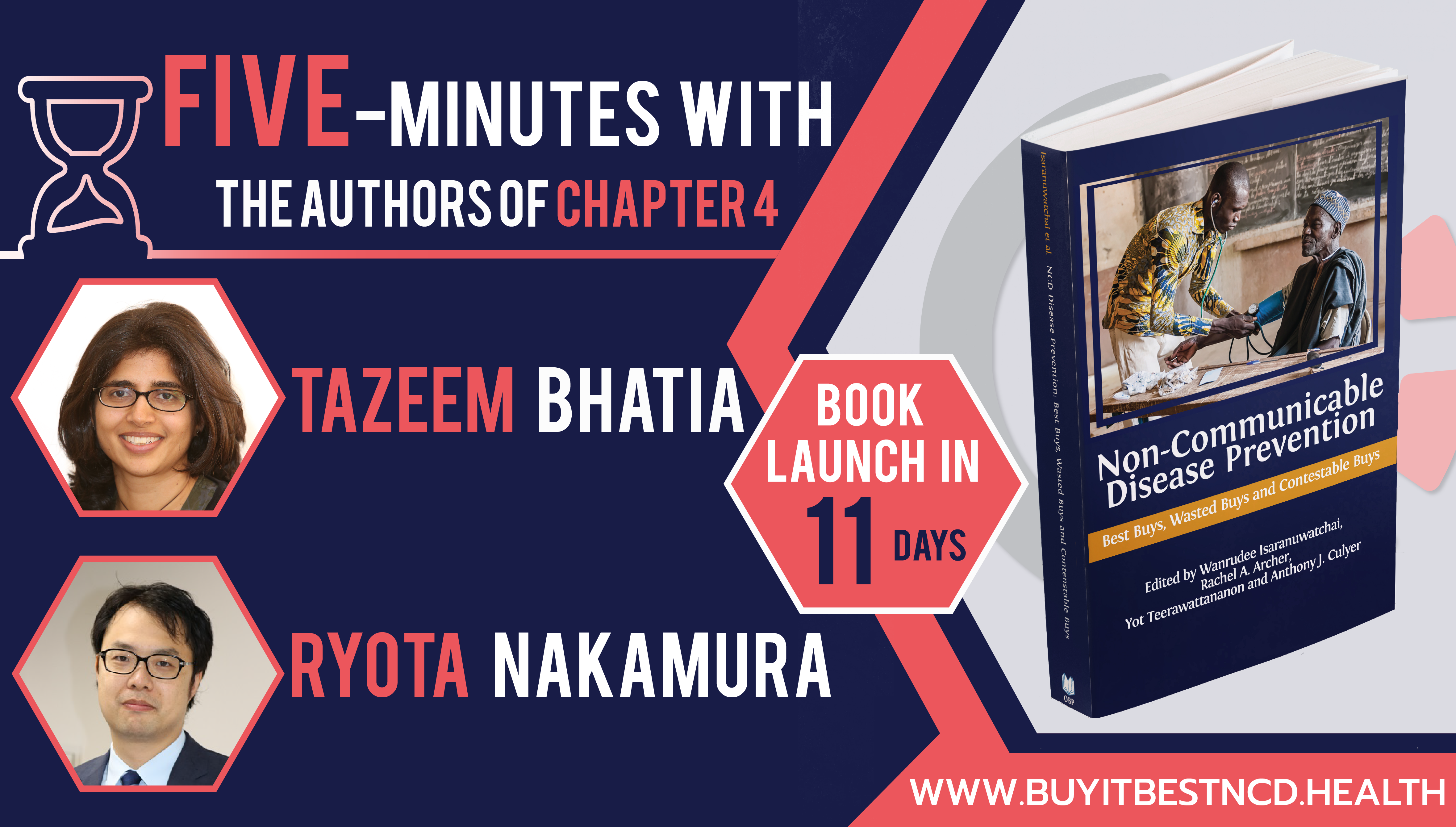Overcoming Barriers: Financing and Service Delivery for Vaccination in Fragile and Conflict-Affected States


We had a quick catch up with Tazeem Bhatia[1] from Global Public health and Ryota Nakamura[2] from Hitotsubashi Institute for Advanced Study, co-authors of Chapter 4 titled Best Buys to get a better understanding of what this chapter entails. Let’s learn more below!
Q : Can you please tell us in one sentence what your chapter is about?
TB: The chapter demonstrates that context sensitivity is a crucial element of determining whether an intervention is cost effective and therefore a best buy in a local setting
RN: The chapter is about practical barriers in implementing a Best Buy in Non-Communicable Disease (NCD) prevention.
Q : Ok. So can you tell uswhat the differences between best buys and contestable buys are? And how do you differentiate between them?
TB: A Best Buy has evidence of cost-effectiveness in that setting, rather than a Contestable Buy that has an aspiration or assumption of cost effectiveness
RN: A Best Buy is demonstrated by local evidence; a Contestable Buys is based largely on aspirations only.
Q : Finally, why should readers not miss reading this chapter?
TB: This chapter uses real world experiences to describe why evidence of cost-effectiveness from elsewhere is not sufficient information to prioritise an intervention
RN: WHO’s Best Buys list is great, but policymakers should not adopt it blindly. The chapter explains why.
The NCD Prevention: Best Buys, Wasted Buys and Contestable Buys book will be launched on 12th December 2019 (UHC Day). To find out more about the project, please visit https://www.buyitbestncd.health/ and stay tuned for more insights with book authors, editors, and reviewers in the coming weeks.
[1] Tazeem Bhatia works at Public Health England
[2] Ryota Nakamura works at Hitotsubashi Institute for Advanced Study, Hitotsubashi University.